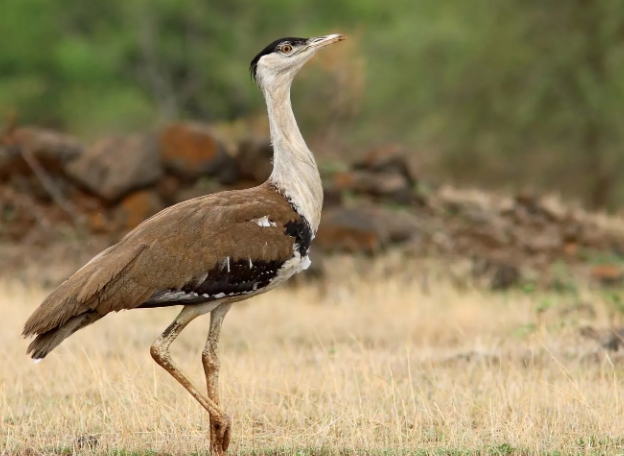Threats to the Great Indian Bustard and Conservation Efforts
The Great Indian Bustard (GIB) (Ardeotis nigriceps) is a critically endangered bird species native to the Indian subcontinent. With fewer than 150 individuals remaining in the wild, the GIB faces numerous threats that are driving it towards extinction.
The GIB primarily inhabits the grasslands and scrublands of the Thar Desert and the Deccan Plateau in India. Its range has significantly decreased due to habitat loss and fragmentation. The bird is now confined to small pockets in the states of Rajasthan, Gujarat, Maharashtra, Karnataka, and Andhra Pradesh.
Threats to the Great Indian Bustard
- Power Lines: The high-tension power lines criss-crossing the GIB’s habitat pose a significant threat to the birds. Due to their large size and limited frontal vision, GIBs are prone to colliding with these power lines, often resulting in death.
- Habitat Loss and Fragmentation: The conversion of grasslands and scrublands for agricultural purposes, industrial development, and infrastructure projects has led to the loss and fragmentation of the GIB’s habitat.
- Hunting: Although hunting of GIBs is illegal in India, sporadic incidents of poaching still occur, further endangering the species.
- Pesticide Use: The extensive use of pesticides in agricultural fields near GIB habitats can lead to the accumulation of toxic substances in the birds’ bodies, negatively impacting their health and reproduction.
- Free-ranging Dogs: The increasing population of free-ranging dogs in the GIB’s habitat poses a threat to the birds, particularly during the breeding season when the dogs may prey on eggs and chicks.
Conservation Efforts
- Habitat Protection: Efforts are being made to identify and protect critical GIB habitats, such as the Thar Desert and the grasslands of the Deccan Plateau.
- Power Line Mitigation: The government and conservation organizations are working towards installing bird diverters on power lines and, in some cases, underground cabling to reduce the risk of bird collisions.
- Captive Breeding: Conservationists have established captive breeding programs to increase the GIB population and eventually release the birds into the wild. In March 2023, the first successful hatching of a GIB chick in captivity was reported.
- Community Involvement: Engaging local communities in conservation efforts and raising awareness about the importance of protecting the GIB and its habitat is crucial for the long-term survival of the species.
Why in News
The Supreme Court is reviewing its 2021 order to bury power lines underground in the Great Indian Bustard’s habitat due to the Centre’s concerns over implementation challenges and costs.
The critically endangered bird faces threats from collisions with power lines in its last refuge in the Thar and Kutch deserts. A committee will suggest steps to protect the GIB, balancing conservation needs with India’s renewable energy goals, as the government works on initiatives like captive breeding.
Month: Current Affairs - March, 2024
Category: Environment Current Affairs







